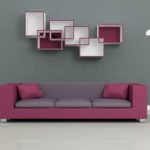Spanish Revival home decor has long captured the hearts and imaginations of homeowners and designers alike. With its rich history and timeless appeal, this style effortlessly combines old-world charm with a touch of Mediterranean elegance. From intricate arches to vibrant tiles, Spanish Revival home decor encompasses a range of elements that create a warm and inviting atmosphere.
In this article, we will delve into the origins and influences of Spanish Revival style, explore the key elements that define its look, offer tips on how to incorporate traditional furnishings and decorative accessories, and discuss ways to infuse your space with the colors, textures, lighting, and outdoor elements characteristic of this iconic design aesthetic.
Whether you are an architecture enthusiast or simply seeking inspiration for your home’s interior design, join us on a journey through the alluring world of Spanish Revival home decor.
Understanding the Origins and Influences of Spanish Revival Style
The Spanish Revival style in home decor has a rich history that is deeply rooted in the architectural and cultural traditions of Spain. Understanding the origins and influences of this style can provide valuable insights into its lasting appeal and help homeowners create an authentic Spanish Revival look.
- The Influence of Spanish Colonial Architecture: One of the major influences on Spanish Revival style is the architecture of the Spanish colonies in the Americas. In the 16th century, Spanish colonizers brought their architectural traditions with them as they settled in places like Mexico, California, and New Mexico. These colonial buildings featured characteristic elements such as adobe construction, red tile roofs, and courtyards with central fountains. These elements became hallmarks of the Spanish Revival style.
- Moorish and Islamic Influences: Another significant influence on Spanish Revival style is the architecture of Moorish Spain during the Middle Ages. The Moors introduced new building techniques and ornamental motifs to Spain, including intricate arches, decorative tile work (known as azulejos), and courtyard layouts inspired by Islamic gardens. These features were later incorporated into Spanish Revival homes, giving them a unique blend of European elegance and Eastern exoticism.
- The Romanticization of Spain: The fascination with all things Spanish reached its peak during the late 19th and early 20th centuries when artists and intellectuals from Europe and America romanticized Spain’s culture, history, and aesthetics. This movement became known as “Spanish Revival” or “Spanish Colonial Revival,” capturing not only architectural styles but also furniture design, textiles, folk art, and more. This romanticized image of Spain continues to inspire modern interpretations of Spanish Revival home decor.
By understanding these origins and influences, homeowners can gain a deeper appreciation for the timeless beauty of Spanish Revival home decor. With an understanding of its historical context, one can properly incorporate key elements such as intricate arches, vibrant tiles, and handcrafted artifacts into their interiors. The next section will delve into these key elements in more detail, providing tips and tricks for creating an authentic Spanish Revival look.
The Key Elements of Spanish Revival Home Decor
Spanish Revival home decor is known for its distinctive elements that bring a touch of warmth and elegance to any space. From the use of intricate arches to vibrant tiles, these key elements play a vital role in capturing the essence of Spanish Revival style. In this section, we will explore the different elements that define Spanish Revival home decor and discuss how they can be incorporated into your own interior design.
One of the most iconic features of Spanish Revival home decor is the use of intricate arches. Often seen in doorways, windows, and even as design motifs in furniture and accessories, arches add a sense of grandeur and architectural interest to a space.
These arches are typically rounded or horseshoe-shaped, reflecting the influence of Moorish and Islamic architecture on Spanish design. Incorporating arched details into your home decor can create a sense of authenticity and instantly transport you to another time and place.
Another hallmark of Spanish Revival style is the use of vibrant tiles. Whether it’s intricate ceramic patterns or bold geometric designs, tiles are an integral part of Spanish Revival home decor. These tiles often feature rich hues such as blues, yellows, greens, and reds, adding an element of color and visual interest to a space.
They can be used as flooring, backsplashes, or even as decorative accents on stair risers or fireplace surrounds. Adding these vibrant tiles to your home can instantly transform it into a captivating Spanish-inspired sanctuary.
| Key Elements | Description |
|---|---|
| Intricate Arches | Reflects Moorish influence; adds grandeur; found in doorways, windows. |
| Vibrant Tiles | Rich hues; intricate patterns; ceramic or geometric designs; used on floors, backsplashes. |
By incorporating these key elements of Spanish Revival home decor into your own space, you can create an atmosphere that exudes timeless beauty and cultural richness. Whether it’s through the use of intricate arches, vibrant tiles, or a combination of both, each element contributes to the overall aesthetic and allure of this style. Embrace the elegance and charm of Spanish Revival home decor and let it transport you to the sun-drenched landscapes of Spain.
Creating an Authentic Spanish Revival Look
To truly achieve an authentic Spanish Revival look in your home, it is important to carefully choose traditional furnishings and decorative accessories that capture the essence of this style. Here are some tips and tricks to help you create a truly breathtaking Spanish-inspired space:
- Furniture: Opt for furniture pieces that feature dark wood finishes, intricate carvings, and arched details. Look for items like sideboards, consoles, and dining tables with ornate legs or wrought-iron accents. Incorporate leather upholstery or woven fabrics on chairs and sofas to add texture.
- Decorative Accessories: Choose decorative accessories that reflect the cultural heritage of Spanish Revival style. This could include elements such as hand-painted tiles, ceramic vases or pottery, wrought iron candleholders or wall sconces, and colorful textiles like embroidered cushions or vibrant rugs.
- Arches and Columns: One of the defining features of Spanish Revival architecture is the use of arches and columns. Incorporate these architectural elements into your decor by using arched doorways, windows, or built-in shelving units. If you don’t have these architectural details in your home, you can still achieve a similar effect by using arched mirrors or incorporating decorative columns in your space.
In addition to these tips, it is important to consider the layout and arrangement of furniture in order to create a cohesive Spanish Revival look. Group furniture pieces together in conversation areas to encourage social interaction, and make sure to leave open spaces to highlight architectural details or provide room for movement.
By incorporating these traditional furnishings and decorative accessories into your home’s design, you can create an authentic Spanish Revival look that will transport you to another time and place.
| Traditional Furnishings | Decorative Accessories |
|---|---|
| Dark wood finishes | Hand-painted tiles |
| Intricate carvings | Ceramic vases or pottery |
| Arched details | Wrought iron candleholders or wall sconces |
| Leather upholstery or woven fabrics | Colorful textiles like embroidered cushions or vibrant rugs |
Colors and Textures
The use of color and texture is an essential element in Spanish Revival home decor. This style draws inspiration from the vibrant and earthy tones found in the Spanish landscape, as well as the rich colors used in traditional tile work and textiles. By incorporating these elements into your design, you can create a space that exudes warmth, depth, and a true sense of Mediterranean charm.
Warm Earth Tones
In Spanish Revival home decor, warm earth tones are often used as a base for the color palette. Think terracotta, ochre, rust, and deep browns. These hues mimic the stucco walls of traditional Spanish homes and create a cozy and inviting atmosphere. Consider using these colors on your walls or as part of your furnishings to achieve an authentic Spanish Revival look.
Vibrant Accents
While neutral earth tones dominate the overall color scheme in Spanish Revival decor, it’s important to incorporate pops of vibrant colors to capture the essence of this style. Look for jewel-toned hues such as deep blues, emerald greens, rich reds, and vibrant yellows. These lively accents can be introduced through decorative accessories like throw pillows, rugs, artwork or even painted furniture pieces.
Textured Surfaces
Texture is another key component of Spanish Revival style. Incorporating textured surfaces adds visual interest and depth to your interiors. Consider using materials such as wrought iron for light fixtures or furniture details, rough-hewn wood beams on ceilings or exposed brick walls to add texture to your space. You can also incorporate textured fabrics such as linen or woolen textiles for upholstery or curtains to create a cozy ambience.
By carefully selecting colors and textures that reflect the essence of Spanish Revival style, you can transform your home into a warm and inviting sanctuary that evokes memories of faraway lands. Whether you prefer a subdued and earthy color palette or want to experiment with vibrant hues, there are endless possibilities for infusing your space with the richness and charm of Spanish Revival home decor.
Infusing Old World Charm
Incorporating handcrafted art and artifacts is a key aspect of achieving an authentic Spanish Revival home decor. These unique pieces add a touch of old-world charm and reflect the rich cultural heritage of Spain. From ornate ceramics to intricate wooden carvings, there are numerous options available to infuse your spaces with the spirit of Spanish craftsmanship.
The Beauty of Talavera Pottery
One popular handcrafted item that can bring a vibrant pop of color to your Spanish Revival interiors is Talavera pottery. Originating from the town of Talavera de la Reina in Spain, this type of pottery is known for its bright hues and intricate patterns.
The use of cobalt blue, yellow, and green is characteristic of Talavera designs. You can incorporate Talavera tiles as backsplashes or accents in your kitchen or bathroom, or display larger pieces such as vases or plates on shelves or mantels.
Handwoven Textiles: Authenticity Meets Comfort
Another way to infuse old-world charm into your Spanish Revival home decor is by incorporating handwoven textiles. These textiles reflect the craftsmanship and traditions passed down through generations. Look for rugs, throws, and pillows that feature traditional weaving techniques such as Navajo or kilim styles. These textiles not only add warmth and comfort to your spaces but also showcase the authenticity of Spanish culture.
The Timeless Appeal of Ironwork
Wrought iron fixtures and accents are another hallmark of Spanish Revival home decor. Consider adding wrought iron chandeliers, sconces, curtain rods, or even furniture pieces with intricate ironwork details. The beauty and durability of wrought iron add a touch of elegance while staying true to the architectural roots of Spanish Revival style.
Incorporating handcrafted art and artifacts into your Spanish Revival home decor allows you to create a unique and culturally rich space. From Talavera pottery to handwoven textiles and wrought iron accents, these decorative elements infuse your interiors with old-world charm and showcase the beauty of Spanish craftsmanship.
Lighting the Spanish Way
Lighting plays a crucial role in creating the ambiance and overall aesthetic of any home decor style, and Spanish Revival is no exception. The use of wrought iron fixtures and warmly glowing lanterns is an integral part of capturing the essence of this distinct design style. In this section, we will explore the beauty and significance of these lighting elements in Spanish Revival home decor.
Wrought iron fixtures are one of the hallmarks of Spanish Revival style. Known for their durability and timeless appeal, these fixtures add a touch of elegance and sophistication to any space. From chandeliers to sconces, wrought iron lighting pieces are often characterized by intricate scrollwork, ornate details, and a rustic charm. Whether placed in a grand entryway or above a dining table, these fixtures serve as focal points that instantly draw attention and elevate the overall aesthetic.
While wrought iron fixtures provide a classic touch, warmly glowing lanterns add a sense of warmth and intimacy to Spanish Revival interiors. Often crafted from materials like glass or amber-colored mica, these lanterns cast a soft and gentle light that creates a cozy atmosphere.
Lanterns can be used both indoors and outdoors to enhance the Spanish Revival aesthetic. When placed strategically around a patio or courtyard, they create an inviting outdoor space that is perfect for gatherings or simply relaxing under the stars.
To further emphasize the beauty of wrought iron fixtures and lanterns in Spanish Revival home decor, it is important to consider their placement within the overall design scheme. Wrought iron chandeliers work best when installed in areas with high ceilings while sconces can be used to flank mirrors or artworks.
Lanterns can be hung from pergolas or placed on accent tables to provide ambient lighting in outdoor spaces. By carefully selecting and positioning these lighting elements, you can ensure that your Spanish Revival interiors are bathed in an enchanting glow that truly captures the essence of this timeless style.
| Lighting Element | Significance |
|---|---|
| Wrought Iron Fixtures | Add elegance and sophistication, serve as focal points |
| Warmly Glowing Lanterns | Create a cozy atmosphere, enhance outdoor spaces |
Outdoor Haven
Designing a Spanish-inspired patio or courtyard can add a charming and inviting outdoor space to your home. Whether you have a small balcony or a spacious backyard, incorporating elements of Spanish revival style can create an outdoor haven that can be enjoyed year-round. Here are some tips and ideas for creating a Spanish-inspired patio or courtyard:
- Use traditional materials: To achieve an authentic Spanish revival look, it’s important to use the right materials. Opt for natural stone or brick flooring to create a rustic and timeless look. Terra cotta tiles are also commonly used in Spanish-inspired outdoor spaces.
- Incorporate arches and columns: Arches and columns are signature features of Spanish architecture. Installing arched doorways or walkways in your patio or courtyard can instantly add a touch of elegance and Old World charm.
- Add vibrant tiles: Vibrant, colorful tiles are another hallmark of Spanish revival style. Consider using hand-painted mosaic tiles as accents on walls, stairs, or tabletops. These eye-catching designs can bring a lively and cheerful atmosphere to your outdoor space.
- Include water features: Adding a fountain or water feature is not only aesthetically pleasing but also integral to creating an oasis-like ambiance in your Spanish-inspired patio or courtyard. The soothing sound of flowing water can enhance relaxation and provide a serene backdrop for outdoor gatherings.
- Incorporate lush greenery: To further enhance the Spanish feel, incorporate lush greenery into your outdoor space. Palm trees, citrus trees, bougainvillea, and other Mediterranean plants thrive in the warm climates often associated with Spanish-style homes.
- Create seating areas: Designate different seating areas to maximize functionality and comfort in your patio or courtyard. Consider incorporating cozy nooks with cushioned benches or wrought iron furniture to create intimate spaces for relaxation or conversation.
- Use wrought iron accents: Wrought iron is synonymous with Spanish revival style decor. From light fixtures to railings and furniture, adding wrought iron accents can instantly transform your outdoor space into a Spanish-inspired retreat.
Remember to design your Spanish-inspired patio or courtyard with functionality in mind. Consider the climate in your area and choose materials and plants that can withstand different weather conditions throughout the year. With careful planning and attention to detail, you can create a beautiful outdoor haven that embodies the timeless appeal of Spanish revival home decor.
Staying True to the Architectural Roots
When it comes to achieving an authentic Spanish Revival home decor, it’s crucial to stay true to the architectural roots of this style. The right materials and finishes are essential in bringing the timeless beauty of Spanish Revival design to life. Here are some tips on how to enhance your home decor with the appropriate materials and finishes.
- Flooring: One of the defining characteristics of Spanish Revival homes is the use of tile flooring, particularly terra cotta tiles. These tiles not only add a touch of rustic charm but also help keep the interiors cool during hot summers. Consider installing terra cotta tiles in your living areas, kitchen, and even outdoor spaces such as patios or courtyards.
- Walls: For walls, consider using stucco or plaster finishes. Stucco is a traditional material used in Spanish Revival architecture and adds texture and depth to the walls. An alternative option is to use decorative ceramic tiles known as Talavera tiles. These hand-painted tiles can be used as accents or for creating stunning focal points such as backsplashes or fireplace surrounds.
- Ceilings: Exposed wooden beams can be a beautiful addition to Spanish Revival decor, adding a touch of warmth and authenticity. If your home doesn’t have these structural features, you can still achieve a similar look with faux beams made from lightweight polyurethane materials.
- Hardware and Fixtures: When it comes to hardware and fixtures, opt for wrought iron pieces to enhance the Spanish Revival aesthetic. From door handles and hinges to lighting fixtures and chandeliers, wrought iron adds an elegant touch while staying true to the style’s architectural roots.
- Windows: Embrace the natural light that floods through large arched windows which are characteristic of Spanish Revival homes. Enhance these windows by using wrought iron window grills or decorative curtains made from natural fibers such as linen or burlap.
By using the right materials and finishes in your Spanish Revival home decor, you can enhance the overall aesthetic and create an authentic and inviting space that pays homage to the rich architectural roots of this style.
Whether it’s integrating terra cotta tiles for flooring, using stucco or plaster finishes for walls, adding wooden beams to ceilings, incorporating wrought iron hardware and fixtures, or embracing arched windows, these elements will help you achieve a truly timeless Spanish Revival look in your home.
Modern Interpretations of Spanish Revival Home Decor
As with any design style, Spanish Revival home decor has evolved over the years to incorporate modern elements while still honoring its classic roots. Modern interpretations of Spanish Revival decor strive to strike a balance between maintaining the timeless elegance of the style and infusing it with contemporary flair.
This results in a fresh and updated look that appeals to those who appreciate the charm of old-world aesthetics but also desire a more current and sophisticated atmosphere within their homes.
One way to achieve a modern interpretation of Spanish Revival home decor is by incorporating sleek and streamlined furniture pieces. While traditional Spanish Revival furniture is often ornate and heavy, modern interpretations opt for cleaner lines and simpler silhouettes.
For example, instead of a bulky dark wood dining table with intricate carvings, a modern twist may feature a lighter-toned table with clean edges and minimal detailing. Similarly, chairs can be upholstered in modern fabrics or leather that aligns with contemporary trends while still pairing well with the overall aesthetic.
In addition to furniture, lighting fixtures can also play a significant role in achieving a modern interpretation of Spanish Revival home decor. While wrought iron fixtures are a staple in traditional Spanish Revival design, contemporary lighting options can bring a touch of sophistication to the space. Consider incorporating sleek pendant lights or statement chandeliers with clean lines and minimalist designs. These fixtures can act as focal points while still complementing the other elements of the room.
To bring a contemporary flair to your Spanish Revival decor, consider incorporating artwork and decorative accessories that reflect modern sensibilities. Choose pieces that embody abstract forms or geometric patterns, which can seamlessly blend classic elegance with contemporary aesthetics. Mixing antique artifacts with more modern accents can create an interesting juxtaposition that adds depth and individuality to your space.
By embracing modern interpretations of Spanish Revival home decor, you have the opportunity to create a unique and personalized space that combines the allure of old-world charm with the freshness of contemporary style. Whether it’s through furniture choices, lighting fixtures, or decorative accents, incorporating modern elements can breathe new life into this time-tested aesthetic.
Maintaining Spanish Revival Home Decor
One of the key aspects of Spanish Revival home decor is its timeless beauty. To ensure that your interiors continue to exude this charm, proper maintenance is essential. By following a few simple tips, you can preserve the integrity and allure of your Spanish Revival style for years to come.
Firstly, it’s important to regularly clean and care for your Spanish Revival furnishings and decorative accessories. Dusting them frequently with a soft cloth or duster will prevent the buildup of dirt and maintain their pristine appearance. Additionally, avoid using harsh chemicals or abrasive cleaners that can damage delicate finishes or materials.
Another crucial aspect of maintenance is preserving the vibrant colors and intricate patterns commonly found in Spanish Revival home decor. Protecting textiles such as rugs, tapestries, and upholstery from direct sunlight will prevent fading over time. Consider using window treatments like blinds or curtains to shield these items from harsh UV rays.
In addition to regular cleaning and protection from sunlight, it’s important to address any issues or repairs promptly. Whether it’s a loose tile in the kitchen backsplash or a cracked piece of wrought iron furniture, fixing these problems as soon as they arise will prevent further damage and preserve the overall aesthetic of your Spanish Revival interiors.
By following these maintenance tips, you can ensure that your Spanish Revival home decor remains as beautiful and authentic as the day you first decorated your space. With proper care, this style has the ability to transcend time and trends, allowing you to enjoy its culture-rich allure for years to come.
Conclusion
Spanish Revival home decor offers a timeless and culture-rich style that adds an undeniable allure to any interior. Throughout this article, we have explored the origins, key elements, tips for incorporating traditional furnishings and decorative accessories, as well as the colors, textures, and lighting that define this style. We have also discussed the importance of staying true to its architectural roots and how to maintain its beauty over time.
Embracing Spanish Revival home decor goes beyond simply following trends; it is about creating a space that tells a story and captures the essence of a rich cultural heritage. By incorporating intricate arches, vibrant tiles, handcrafted art and artifacts, as well as warm glow from wrought iron fixtures, you can infuse your living spaces with an old-world charm that transports you to another time.
Furthermore, Spanish Revival home decor allows for modern interpretations that blend classic elegance with contemporary flair. This style provides endless opportunities for creativity and personalization. Whether you choose to design an outdoor patio or courtyard in Spanish-inspired fashion or enhance your interiors with the right materials and finishes, this style lends itself to versatility and adaptability.
In conclusion, embracing Spanish Revival home decor is about embracing history, culture, and artistic expression. It transcends time and trends by offering a unique blend of classic elegance and contemporary flair. By following the tips and tricks presented throughout this article while staying true to the architectural roots of this style, you can create interiors that exude warmth, charm, and an unmistakable allure that will stand the test of time.

I’m thrilled to be your companion on this exciting journey through the world of home decor and design. With a passion for turning houses into homes and a keen eye for the finer details, I’m here to help you transform your living spaces into beautiful, functional, and meaningful havens.





